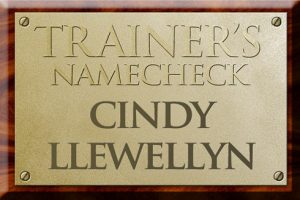Woverlino's showjumping used be 'rather wild', but trainer Cindy Llewellyn has helped turn Victoria Edwards' mare into a BE90 winner
 When a horse rushes its fences in the showjumping phase the experience can be unnerving and gives the rider little time to think about strategy between the jumps.
When a horse rushes its fences in the showjumping phase the experience can be unnerving and gives the rider little time to think about strategy between the jumps.
Victoria Edwards, a University of Sussex business management student, once described her 10-year-old mare Woverlino’s showjumping as “rather wild”. However the work she has being doing with trainer Cindy Llewellyn has obviously made a difference as the pair topped BE90 section H at Brightling Park, 13-14 July (full report in Horse & Hound on sale 25 July). We asked Cindy to share with us her ideas on slowing down a horse that rushes its fences.
How have you helped Woverlino to slow down into his fences?
What I’ve done with Victoria is taken the time to improve her flatwork, to slow it down and establish a rhythm in all paces, using poles on the ground and very small fences initially. Once that was achieved, we then rode the horse forward again, but in a more organised and prepared way. This gives the rider more time so she can think about schooling the horse on the flat in between each fence, focus on each fence individually and then link them together as a course. I worked on getting Victoria to land after the fence, sit up and become organised more quickly, balancing, changing legs if necessary and so on. This gives her time to think about preparing for the next jump, riding her corners and turns properly and preparing a line to the next fence.
What’s your USP
I like to get riders to believe in themselves and their horses and to develop their confidence and their skills and create lots of tools that they can use in their toolbox. Whatever ends up being thrown at them, they can go back to the basic skills they develop with me.
What’s your pet hate
People getting cross with their horses through frustration.
Share with us your signature exercise
I concentrate on flatwork and the rider’s position. Sitting straight, being level and in a correct position is important to me. If a rider is crooked or collapsed their horse tends to mirror image that and will fall in around the corners and arrive at the fences sooner than they are meant to. I always check a rider’s position first. I use the mirrors in my school to show them their position, and sometimes I take a photograph on my phone to show them if they are sitting crooked. The “legs away” exercise, if done correctly, is useful to get the rider straight and looser through the hips and thigh, just in halt to start with, although once the rider is more able and established you can do legs away in walk, trot and canter.
If we were to ask your pupils, what would be the one thing they all say you continually shout?
I try never to shout. I aim to keep my lessons very calm and tailor each session individually. I really like to encourage my students — I coach everyone from beginners to four-star riders. At competitions, I try to keep them in a good relaxed position and knowing that they now have the skills and knowledge in place, tell them to go out there and enjoy it!
For more about Cindy’s work visit www.cindyllewellyn.co.uk



